LED solar lighting represents a pinnacle of modern renewable energy technology, merging the efficiency of light-emitting diodes (LEDs) with the boundless power of the sun. In the United States, where homeowners increasingly prioritize sustainability and cost savings, solar-powered lawn and hallway lights have gained traction. These systems harness daylight to charge batteries, illuminating outdoor spaces and indoor corridors with minimal environmental impact. This article delves into the technical underpinnings of LED solar lawn lights and solar hallway lights, offering a detailed examination enriched with practical insights tailored to American households. By incorporating real-world examples, including Bitpott’s innovative products, we aim to provide a comprehensive resource for understanding and adopting this technology.
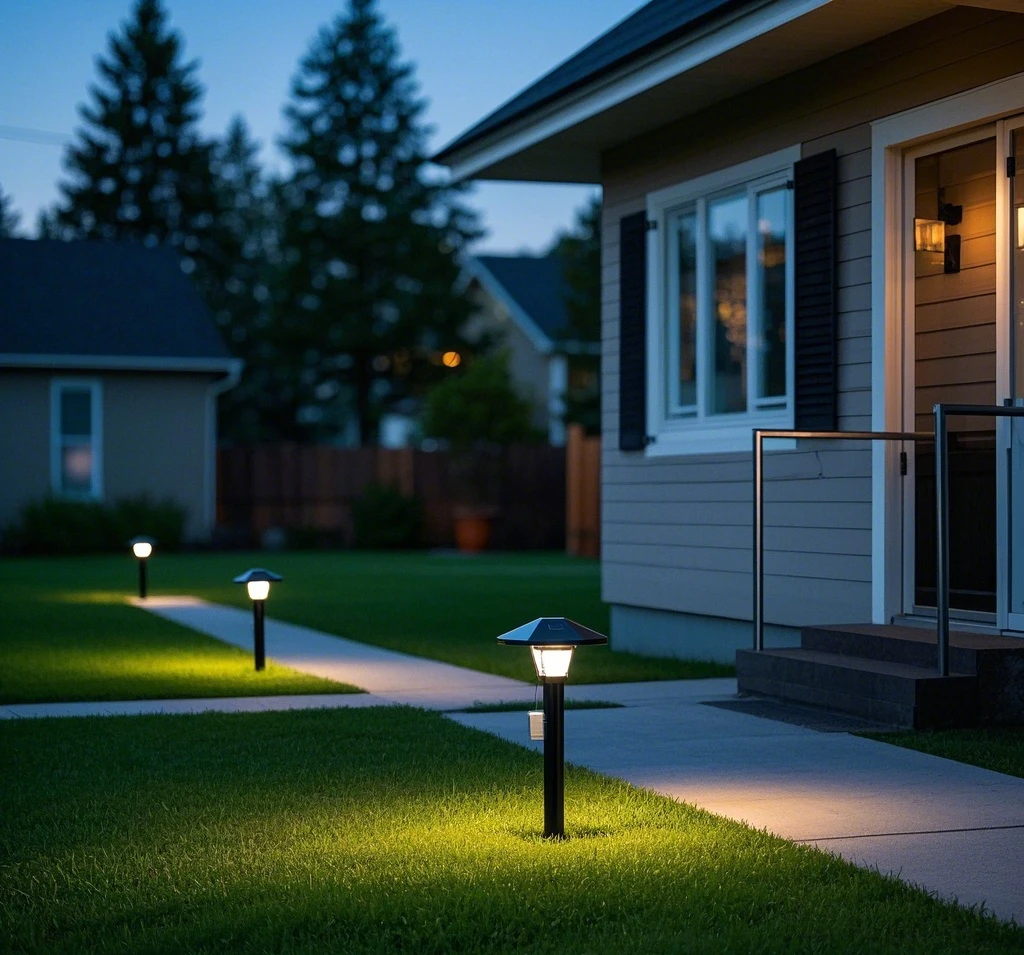
LED Solar Lawn Lights: Technology and Design
Definition and Functionality
LED solar lawn lights utilize solar cells to convert sunlight into electricity, powering energy-efficient LEDs for nighttime illumination. During the day, solar panels absorb sunlight, storing energy in rechargeable batteries. At dusk, this stored energy activates the LEDs, casting a soft glow over lawns, gardens, and pathways. Prized for their safety, energy efficiency, ease of use, and eco-friendliness, these lights are a staple in American suburban homes, enhancing curb appeal in residential communities and public parks alike.
Structural Components
A typical LED solar lawn light comprises several key elements:
- Solar Panel: Converts sunlight into electrical energy using photovoltaic cells.
- Ultra-Bright LEDs: Serve as the light source, offering longevity and low power consumption.
- Rechargeable Battery: Stores energy, typically a NiMH or lithium-ion type.
- Control Circuit: Manages charging and discharging, often with light-sensitive automation.
- Housing: A weatherproof enclosure, ensuring durability in diverse climates.
For instance, Bitpott’s Solar Pathway Lanterns integrate these components into a sleek, bronze-finished design, blending aesthetics with functionality for American gardens.
System Mechanics
The operational backbone of solar lawn lights lies in their intelligent control systems. A boost integrated circuit (IC) facilitates seamless transitions between charging and discharging modes. During daylight, the solar panel detects sunlight and shifts to charging mode, powering down the LEDs. At night, the absence of light triggers the battery to discharge, illuminating the LEDs. This IC can elevate a 1.2V battery output to 3.6V, sufficient to drive 1-7 LEDs per circuit.
Advanced controllers, like those in Bitpott’s models, boast an 80-85% energy conversion efficiency, reducing the required solar panel size. With a low startup voltage of 0.9V and adjustable current output, these systems adapt to varying light conditions—a boon for regions with inconsistent sunlight, such as the Pacific Northwest.
Advantages of LED Light Sources
LEDs dominate solar lawn lighting due to their exceptional attributes:
- Longevity: Lifespans exceed 100,000 hours, far outpacing traditional bulbs.
- Low Voltage: Operating on 1-3.6V, they pair seamlessly with solar systems.
- Versatility: Low-voltage DC enables dimming, frequent switching, and color adjustments without performance loss.
In the past decade, LED technology has advanced significantly, with improved efficacy (lumens per watt) and cost-effectiveness. For American homeowners, this means durable, customizable lighting—think Bitpott’s warm-white LEDs casting dynamic patterns across a backyard patio.
LED Solar Hallway Lights: Technology and Implementation
Operational Principles
Solar hallway lights elevate indoor lighting in multi-story buildings, such as apartment complexes and suburban homes with multiple levels. These systems feature a centralized solar panel—often rooftop-mounted—paired with LED fixtures on each floor, connected to a shared battery and charge controller. Voice-activated or light-sensitive switches (e.g., Bitpott’s acoustic-light control modules) activate the LEDs when footsteps echo or darkness falls, turning off when activity ceases.
During the day, the solar panel charges the battery via a controller. At night, or in dim conditions, the battery powers the LEDs. To ensure reliability during cloudy spells—common in states like Michigan—systems are designed with oversized batteries, providing 2-3 days of backup power.
System Specifications and Performance
Key technical metrics define solar hallway lights:
- Power Range: 2-5W per fixture, suitable for ambient lighting.
- Power Supply: DC, typically 12V, from the battery.
- Solar Conversion Efficiency: Above 15.5%, with premium monocrystalline panels.
- System Efficiency: Over 85%, minimizing energy loss.
- Battery Specs: 12V, 8Ah capacity, with protective thresholds (e.g., 11.6V under-voltage, 14.4V overcharge).
- Safety Features: Reverse polarity, short-circuit, and overload protection.
- Control: Combines overcharge/over-discharge management with voice/light activation.
Bitpott’s Solar Wall Lanterns, for example, adapt these specs into a compact, easy-mount design, ideal for illuminating stairwells in American homes.
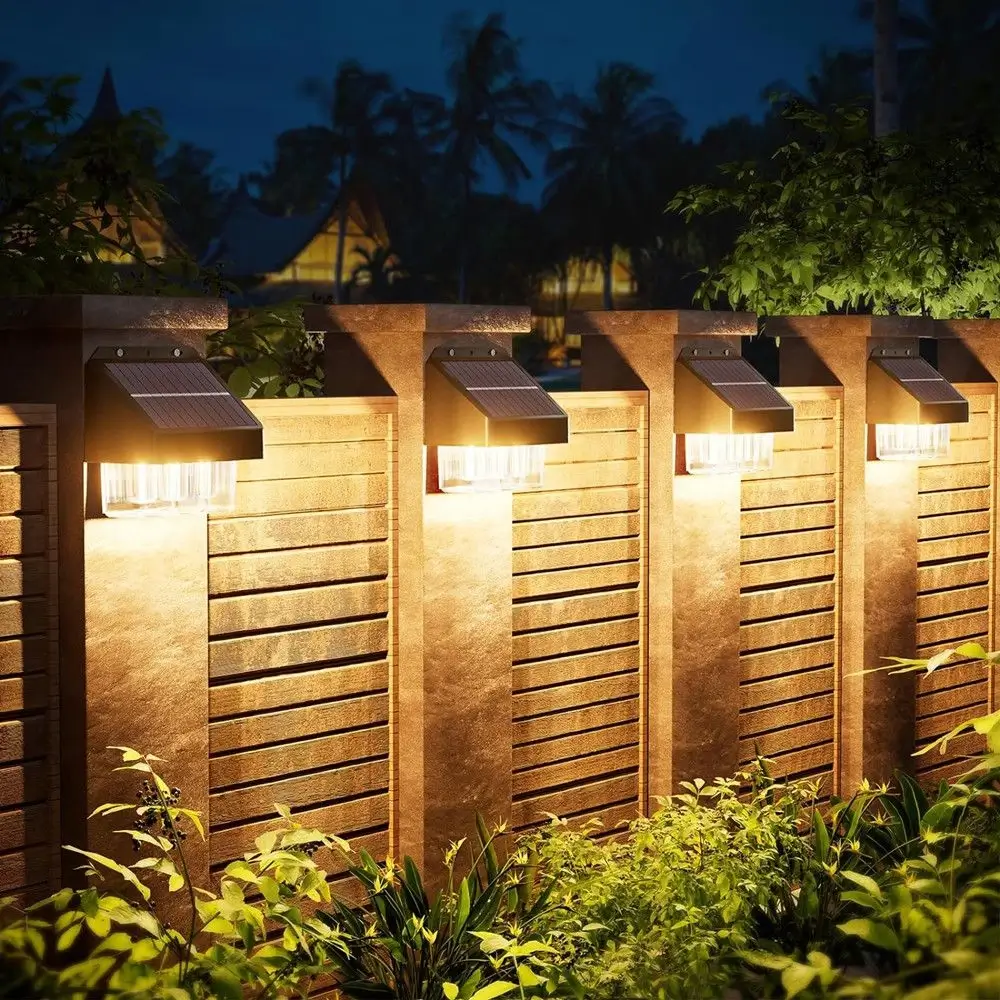
Advantages Over Traditional Lighting
Solar hallway lights offer compelling benefits:
- Energy Savings: Solar power eliminates grid dependency, a plus for eco-conscious U.S. households.
- Safety: Low-voltage DC reduces risks of shocks or fires, critical in multi-family dwellings.
- Durability: LEDs last up to 50,000 hours, batteries 3-5 years, and panels over 20 years.
- Convenience: No wiring hassles or power outages, simplifying installation in older homes.
- Eco-Friendliness: Zero emissions align with America’s green building standards, like LEED certification.
In a typical American suburb, replacing 25W incandescent bulbs with 3W Bitpott LED hallway lights slashes energy use eightfold. A single fixture drops from 18.25 kWh annually to 1.68 kWh, saving nearly 5,000 kWh across 300 units—enough to power a small home for months.
Real-World Application: Enhancing U.S. Residential Buildings
Hallway lighting in American apartment complexes often falls under shared maintenance costs, split between residents and property managers. Traditional setups—incandescent bulbs on outdated switches—burn all night, inflating electric bills and sparking disputes over fees. Upgrading to solar LED systems with voice-light controls resolves these woes.
Take a hypothetical 10-story building in Denver: swapping 50 incandescent fixtures for Bitpott’s 3W solar hallway lights cuts annual consumption from 912.5 kWh to 84 kWh. At $0.13 per kWh (U.S. average), savings exceed $100 yearly, excluding maintenance reductions. Property managers benefit from one-time installation costs—around $1,500 for panels, batteries, and lights—offset by decades of free operation, aligning with national energy-saving mandates like the Energy Star program.
Market Potential and Future Prospects
The U.S. market for solar hallway lighting is ripe for growth. Retrofitting existing buildings with LED and solar upgrades addresses rising energy costs, while new constructions can integrate these systems from the outset. Bitpott’s offerings, with their high-efficiency panels and smart controls, cater to both scenarios, promising broad adoption in urban and rural settings alike.
Comparative Insights: Lawn vs. Hallway Applications
While both systems leverage solar energy and LEDs, their designs diverge:
- Lawn Lights: Decentralized, standalone units for outdoor decor, prioritizing mobility and weather resistance.
- Hallway Lights: Centralized, networked systems for indoor utility, emphasizing automation and safety.
American households can mix and match—Bitpott’s lawn lights for front yards and hallway lights for interiors—creating a cohesive, solar-powered ecosystem.
Conclusion
LED solar lighting, encompassing lawn and hallway applications, exemplifies the fusion of efficiency and sustainability. Solar lawn lights, with their compact design and LED longevity, beautify outdoor spaces across U.S. suburbs. Hallway lights, with centralized power and smart controls, revolutionize indoor illumination, cutting costs and enhancing safety. Brands like Bitpott elevate these technologies, offering durable, high-performance solutions tailored to American needs. As energy prices climb and environmental awareness grows, these systems promise not just practicality but a brighter, greener future for homes nationwide.
References
- U.S. Department of Energy, 2023 Lighting Efficiency Report.
- National Renewable Energy Laboratory, Solar Technology Advances (2023).
- Energy Star, Residential Lighting Standards (2023).



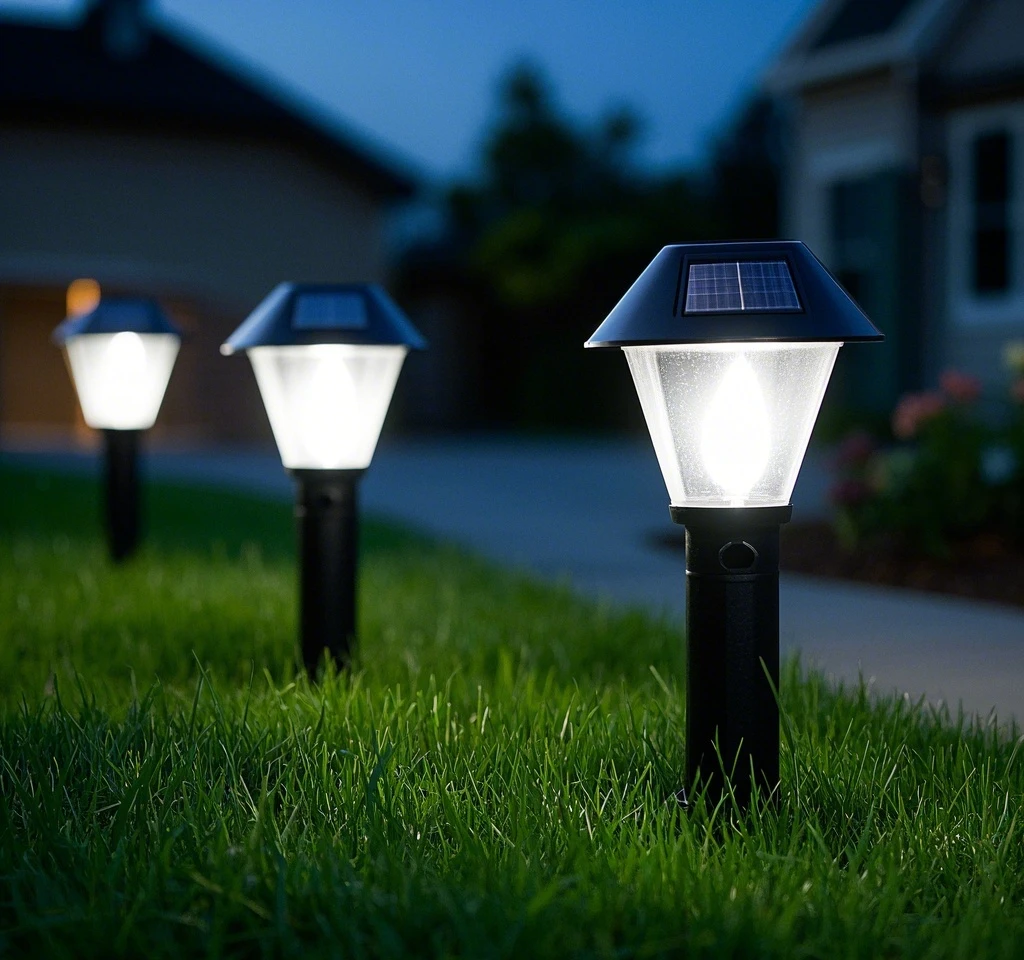
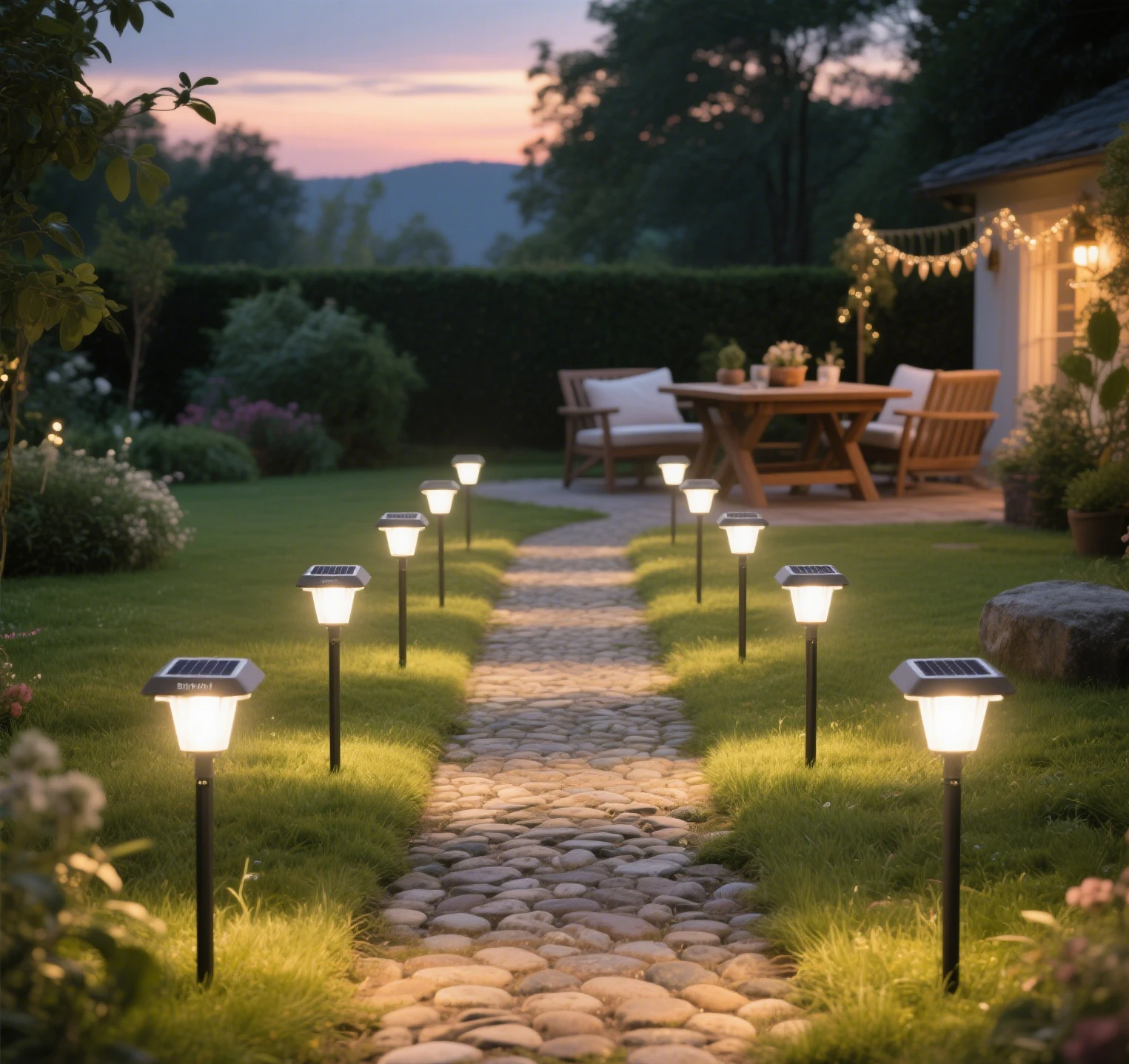
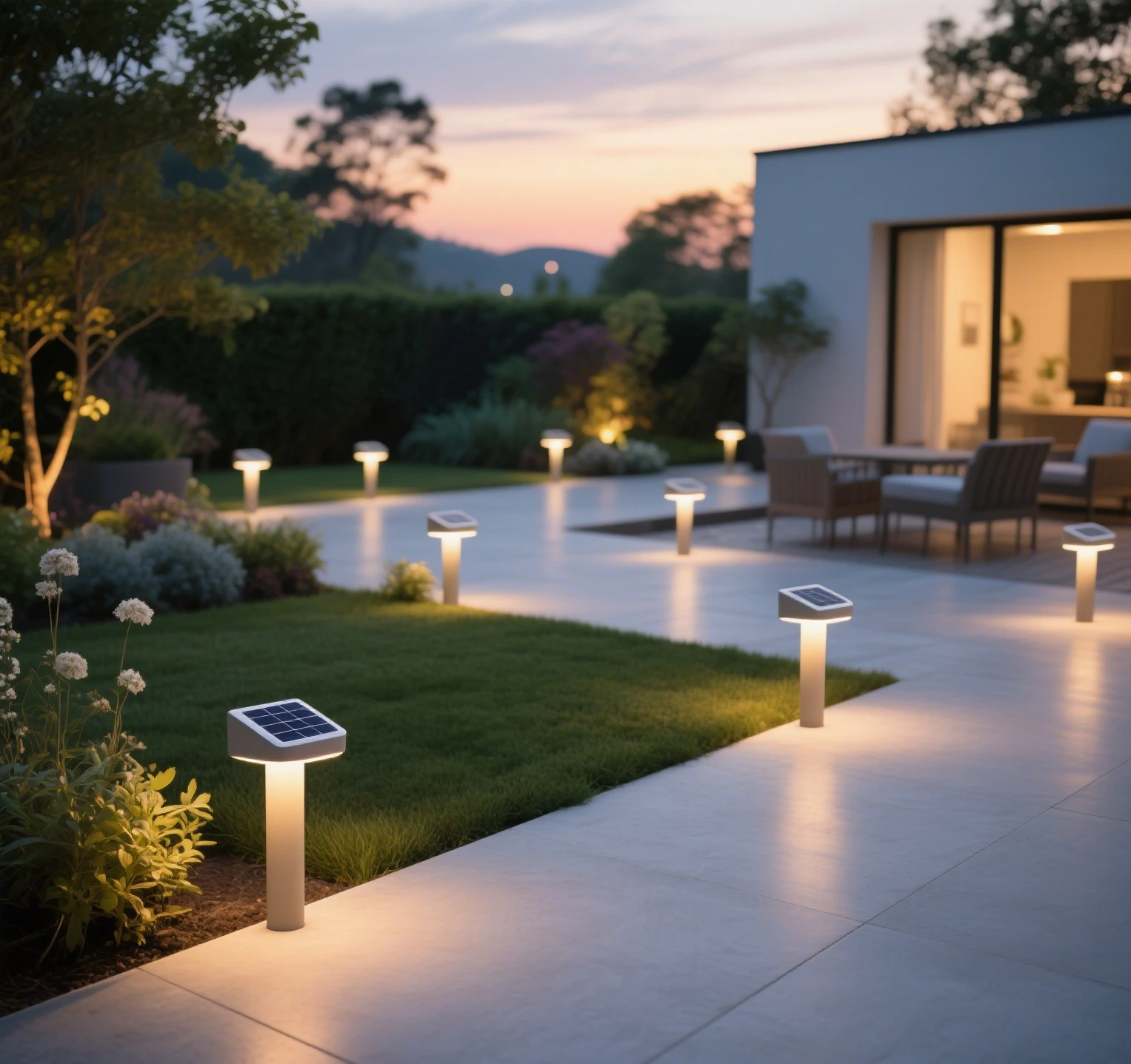

Leave a Reply